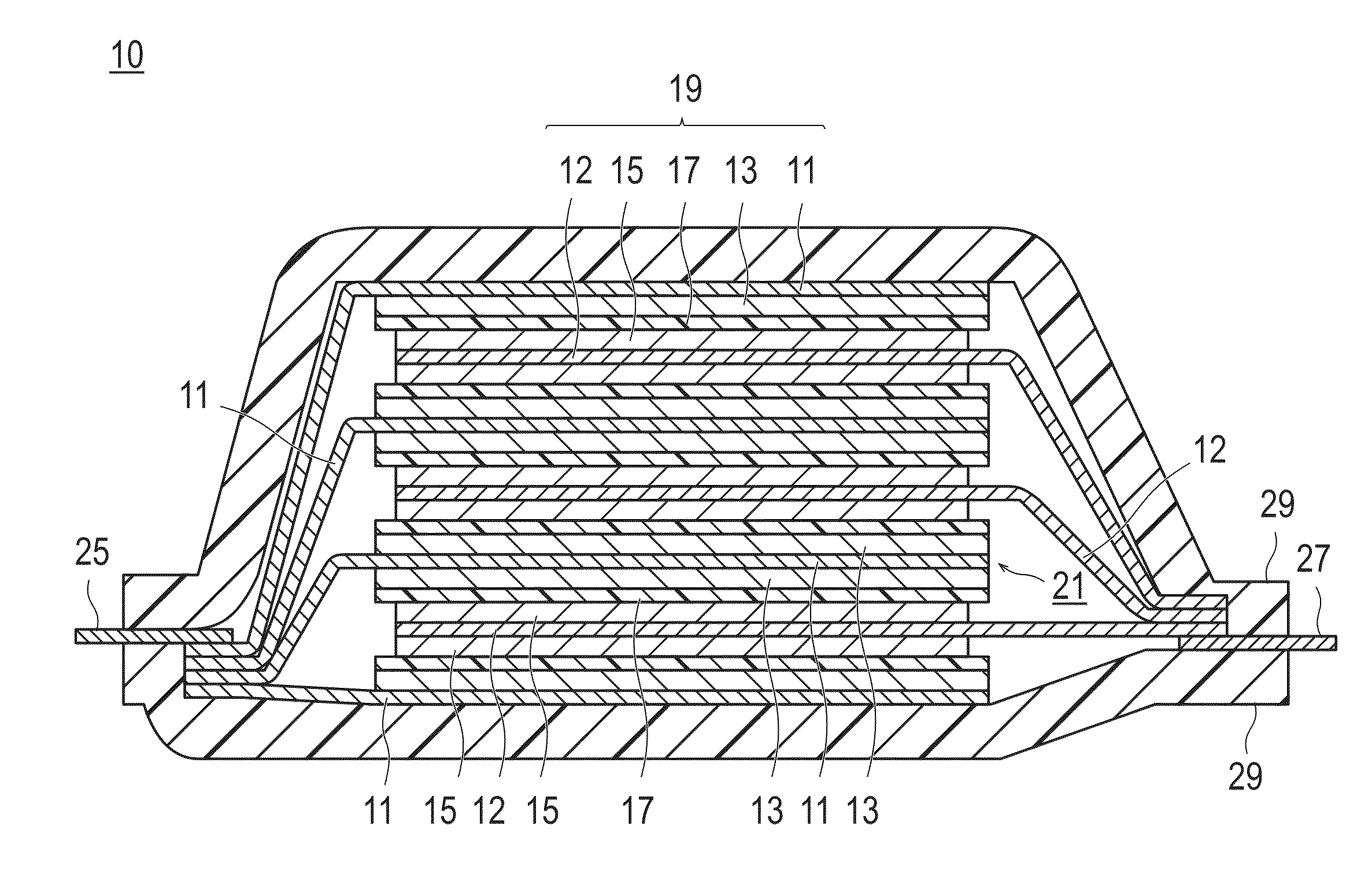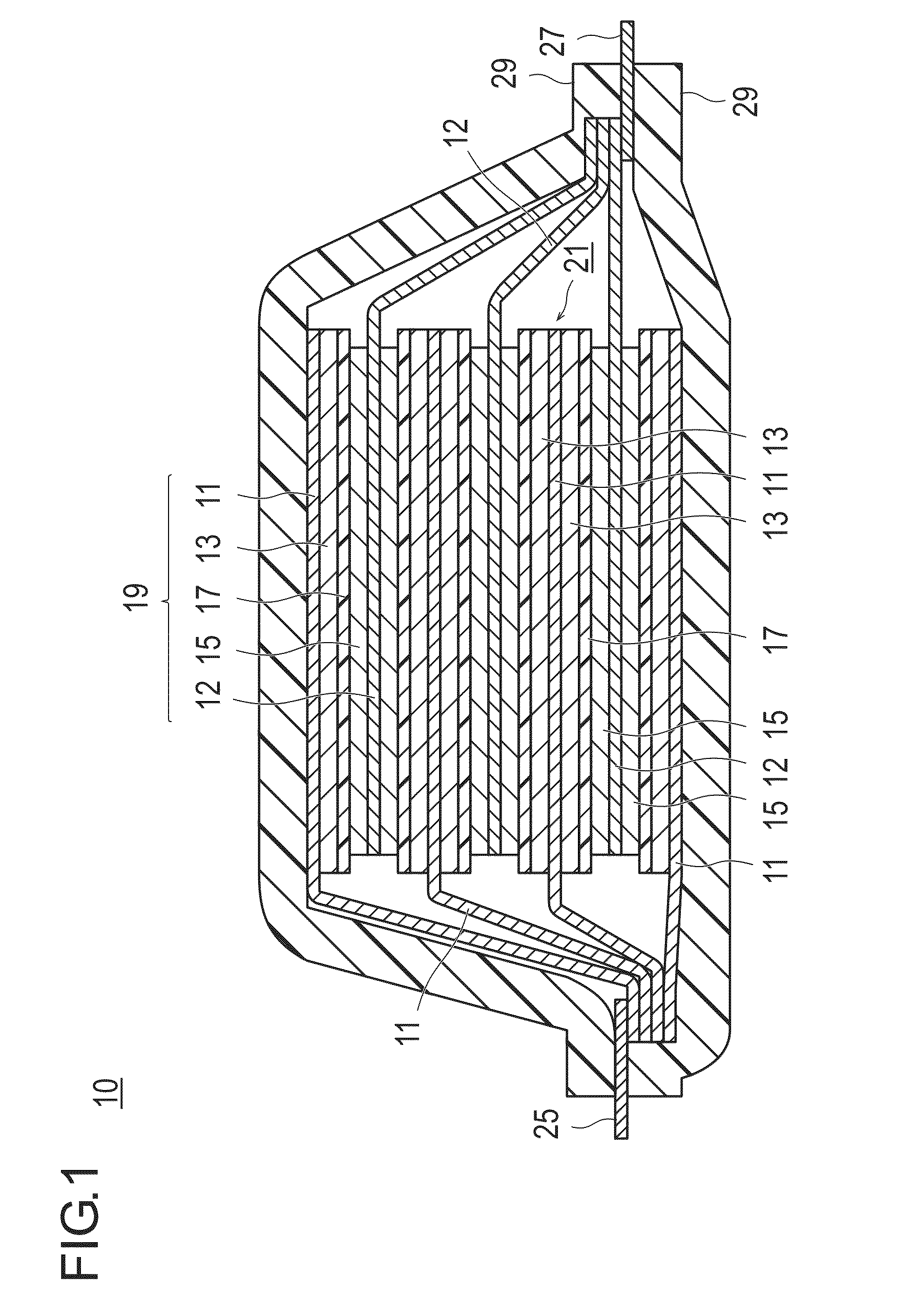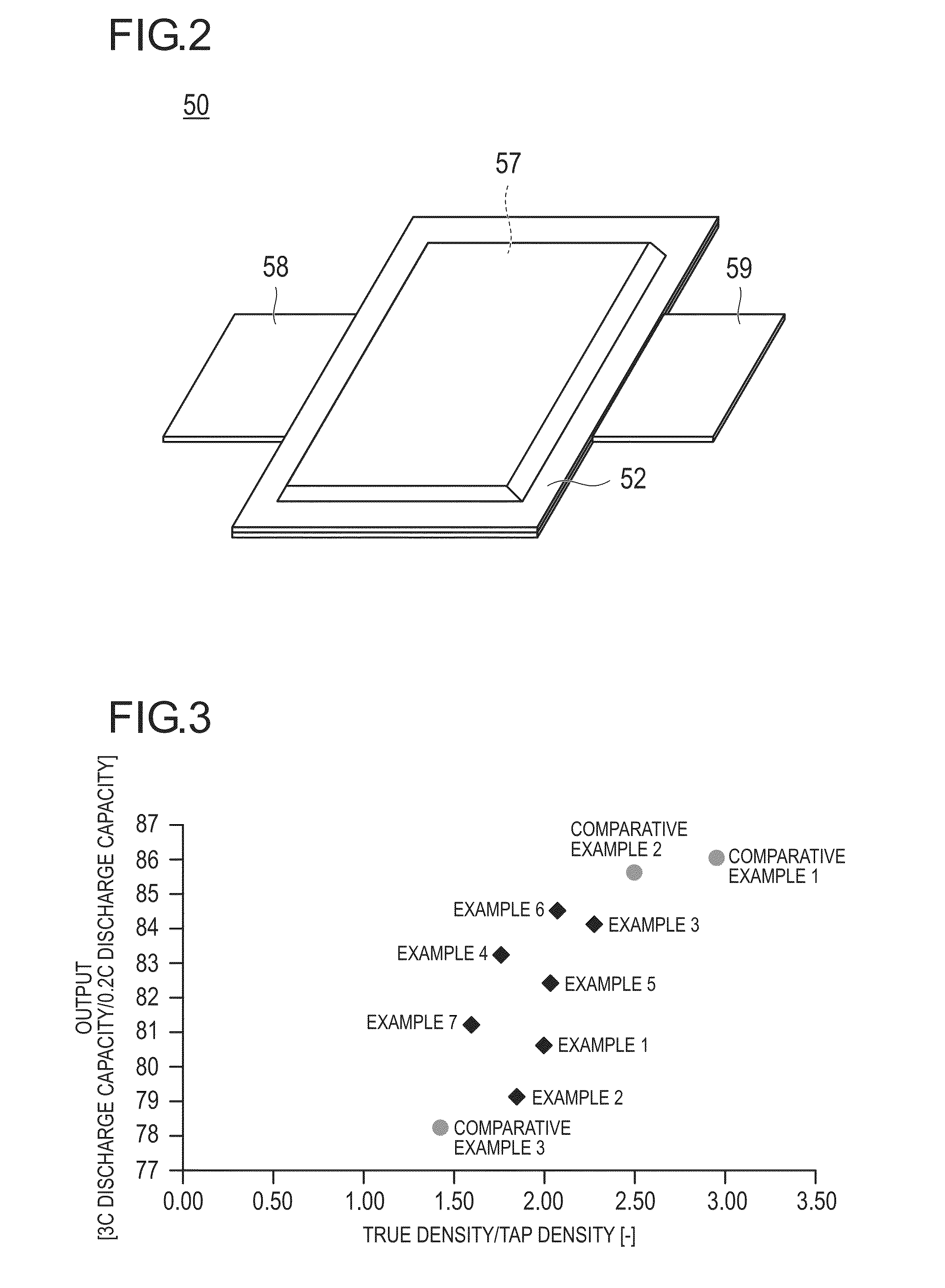Positive electrode active substance, positive electrode material, positive electrode, and non-aqueous electrolyte secondary battery
a technology of active substances and positive electrodes, applied in the direction of cell components, electrochemical generators, nickel compounds, etc., can solve the problems of lowering output characteristics and over-densification of primary particles within particles, and achieve the effects of lowering li diffusion properties, reducing output characteristics, and increasing the density of positive electrode active substances
- Summary
- Abstract
- Description
- Claims
- Application Information
AI Technical Summary
Benefits of technology
Problems solved by technology
Method used
Image
Examples
example 1
(1) Production of Positive Electrode Active Substance
[0119]To an aqueous solution (1.0 mol / L) having nickel sulfate, cobalt sulfate, and manganese sulfate dissolved therein, sodium hydroxide and ammonia were continuously supplied, and according to a co-precipitation method, metal composite hydroxide in which nickel, cobalt, and manganese were dissolved at molar ratio of 80:10:10 was produced.
[0120]The metal composite hydroxide and lithium carbonate were weighed such that the ratio of the total mole number of metals (Ni, Co, Mn) other than Li to the mole number of Li was 1:1, and then thoroughly mixed. The temperature was increased at a temperature increase rate of 5° C. / min and calcination was performed under oxygen atmosphere at 760° C. for hours. After cooling to room temperature, positive electrode active substance A consisting of a lithium nickel-based composite oxide (compositional formula: LiNi0.8CO0.1Mn0.1O2) was obtained. The average particle diameter of primary particles (D...
example 2
[0143]To an aqueous solution (1.0 mol / L) having nickel sulfate, cobalt sulfate, and manganese sulfate dissolved therein, sodium hydroxide and ammonia were continuously supplied, and according to a co-precipitation method, metal composite hydroxide in which nickel, cobalt, and manganese were dissolved at molar ratio of 80:10:10 was produced.
[0144]The metal composite hydroxide and lithium carbonate were weighed such that the ratio of the total mole number of metals (Ni, Co, Mn) other than Li to the mole number of Li was 1:1, and then thoroughly mixed. It was then calcined under oxygen atmosphere at 780° C. for 9 hours. After cooling to room temperature, positive electrode active substance B consisting of a lithium nickel-based composite oxide (compositional formula: LiNi0.8CO0.1Mn0.1O2) was obtained. The average particle diameter of primary particles (D1) in the secondary particles of the obtained lithium nickel-based composite oxide was 250 nm. The average particle diameter of second...
example 3
[0146]To an aqueous solution (1.0 mol / L) having nickel sulfate, cobalt sulfate, and manganese sulfate dissolved therein, sodium hydroxide and ammonia were continuously supplied, and according to a co-precipitation method, metal composite hydroxide in which nickel, cobalt, and manganese were dissolved at molar ratio of 80:10:10 was produced.
[0147]The metal composite hydroxide and lithium carbonate were weighed such that the ratio of the total mole number of metals (Ni, Co, Mn) other than Li to the mole number of Li was 1:1, and then thoroughly mixed. It was then calcined under oxygen atmosphere at 760° C. for 8 hours. After cooling to room temperature, positive electrode active substance C consisting of a lithium nickel-based composite oxide (compositional formula: LiNi0.8Co0.1Mn1O2) was obtained. The average particle diameter of primary particles (D1) in the secondary particles of the obtained lithium nickel-based composite oxide was 186 nm. The average particle diameter of secondar...
PUM
| Property | Measurement | Unit |
|---|---|---|
| particle diameter | aaaaa | aaaaa |
| density | aaaaa | aaaaa |
| porosity | aaaaa | aaaaa |
Abstract
Description
Claims
Application Information
 Login to View More
Login to View More - R&D
- Intellectual Property
- Life Sciences
- Materials
- Tech Scout
- Unparalleled Data Quality
- Higher Quality Content
- 60% Fewer Hallucinations
Browse by: Latest US Patents, China's latest patents, Technical Efficacy Thesaurus, Application Domain, Technology Topic, Popular Technical Reports.
© 2025 PatSnap. All rights reserved.Legal|Privacy policy|Modern Slavery Act Transparency Statement|Sitemap|About US| Contact US: help@patsnap.com



